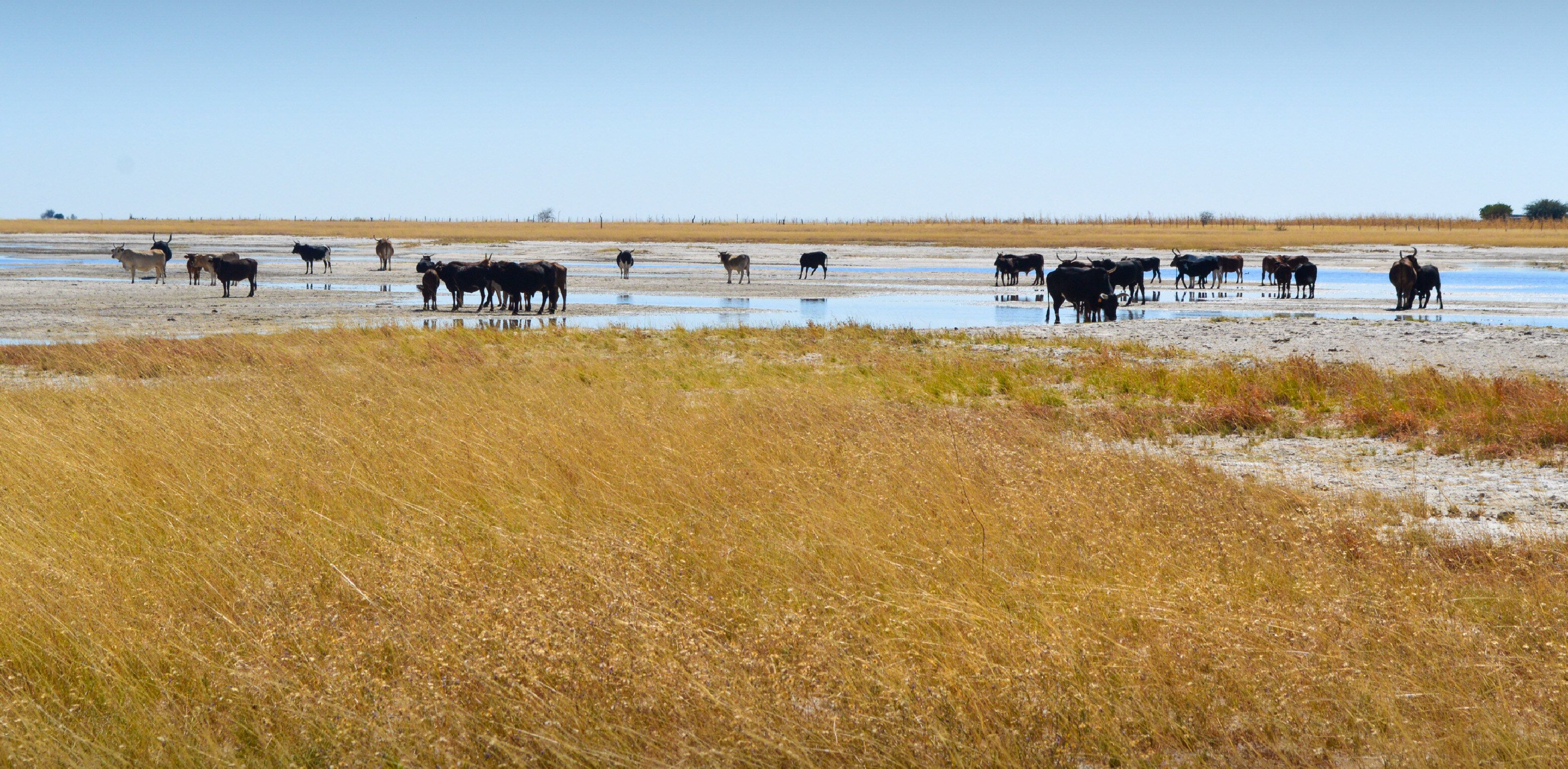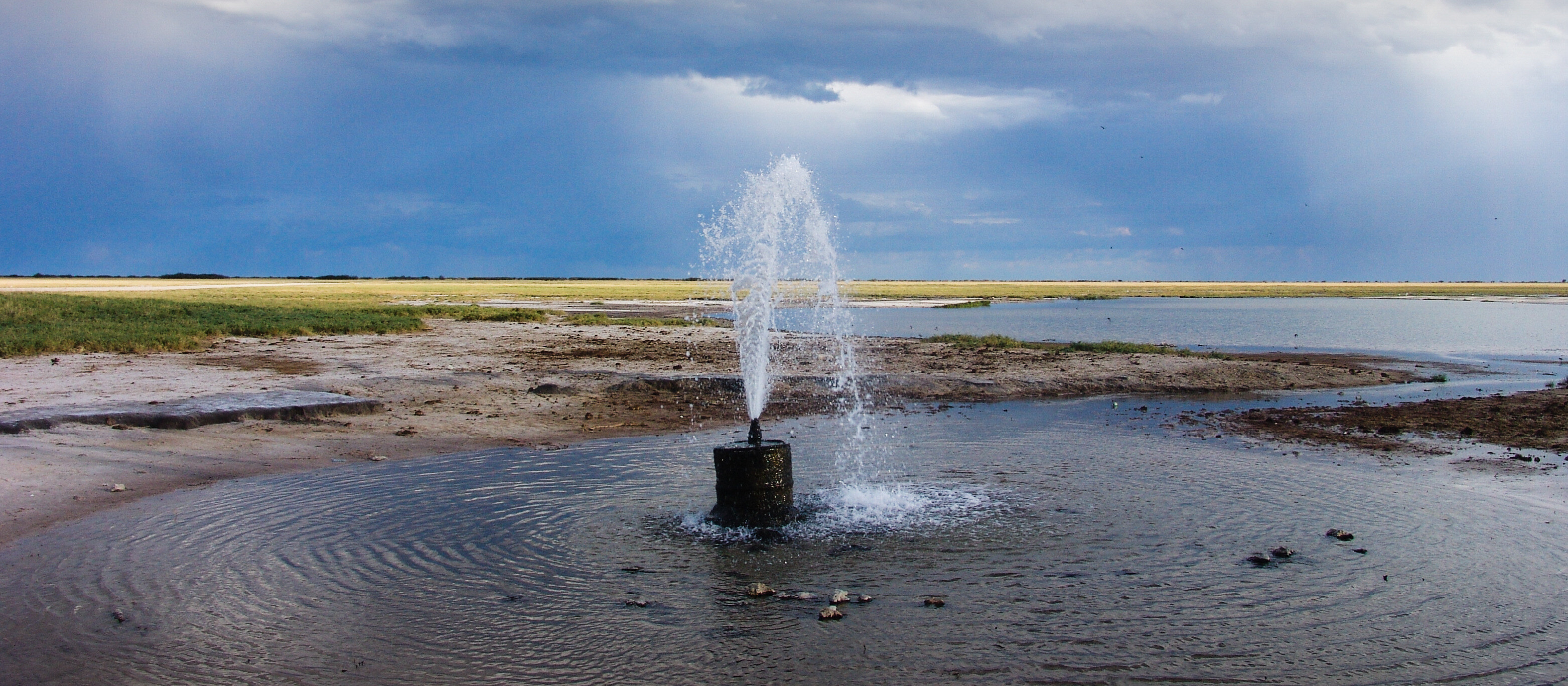The third Roman Catholic Church in Owambo, Domini Nostri Christi Rex, was established by Father Johannes Helfrich on the banks of the Oshana Okatana on 16 June 1932 and he gave the site the Biblical name of Bethany.
The name Okatana was used for the first time in correspondence in February 1935. Okatana’s name, which is said to translate as ‘calf’, recalls an incident when a missionary found a calf stuck in a pan along the oshana that runs through the settlement. He asked the people to help the animal out of the mud and learned that the word ‘okatana’ means “calf”. The name has since been used to refer to the area, as well as the Okatana Oshana.

Although the South West African Administration had indicated in 1928 that it had no objection to the expansion of the Catholic mission in Owambo, selecting the site for the mission station was not without numerous challenges. It had to be situated in the neutral area between Ondonga, Oukwanyama, Uukwambi and Ombalantu and required the consent of the chiefs and headmen of all four traditional authorities. Father Helfrich also had numerous disagreements with the ‘Native Commissioner of Ovamboland’, Cocky Hahn.
A church, which was designed to accommodate 250 people, was taken into use on 10 September 1932, although it was only partially completed. It was initially also used as a school, while dormitories were built for between 20 and 30 learners. The school was run by the Roman Catholic Church, which was responsible for its maintenance of its infrastructure until 1936, while the administration provided the learning materials and paid the salaries of teachers and staff when it became a government school in 1960.
Father Franz Seiler, who joined Father Helfrich at Okatana at the end of July 1932, started a teachers’ training course in 1936. This was not only because it was too expensive to send teachers to the Döbra Institute of the Roman Catholic Church in Windhoek but because of the logistics.

The mission at Okatana also played an important role in the printing of prayer and hymn books, the catechisms, church calendars and various other religious materials in several Namibian languages. After Father Seiler bought a second-hand printing press and printing paper around 1945, the Okatana Printing and Publishing House began publishing the church newsletter Omukuni (meaning The Sower) and 240 Biblical Histories were printed in February 1946.
Father Seiler became the first Roman Catholic missionary to join common ecumenical action against the mistreatment and torture of the people in Owambo. Seiler, together with Bishop Auala of what was then known as the Evangelical Lutheran Ovambo-Kavango Church (ELOC) and an Anglican representative from Odibo protested strongly against police brutality in a letter to Captain Van Heerden, the officer-in-charge of the South African Police at Oshakati, in January 1967.
The Okatana Oshana , one of the major seasonal waterways in Owambo, splits into two channels that divides Oshakati into Oshakati West and Oshakati East. During major efundja such as in 2007, 2008 and 2009, vast areas become inundated and large numbers of homes are flooded. To minimise the flood risk, Phase One of the Oshakati Flood Mitigation Project included a control system that can divert the flood water at the bridge over the oshana. It is without any doubt the largest traffic circle in Namibia!








.png)

SUBMIT YOUR COMMENT